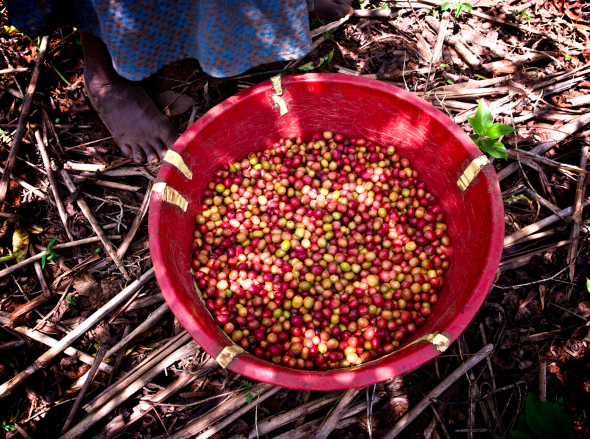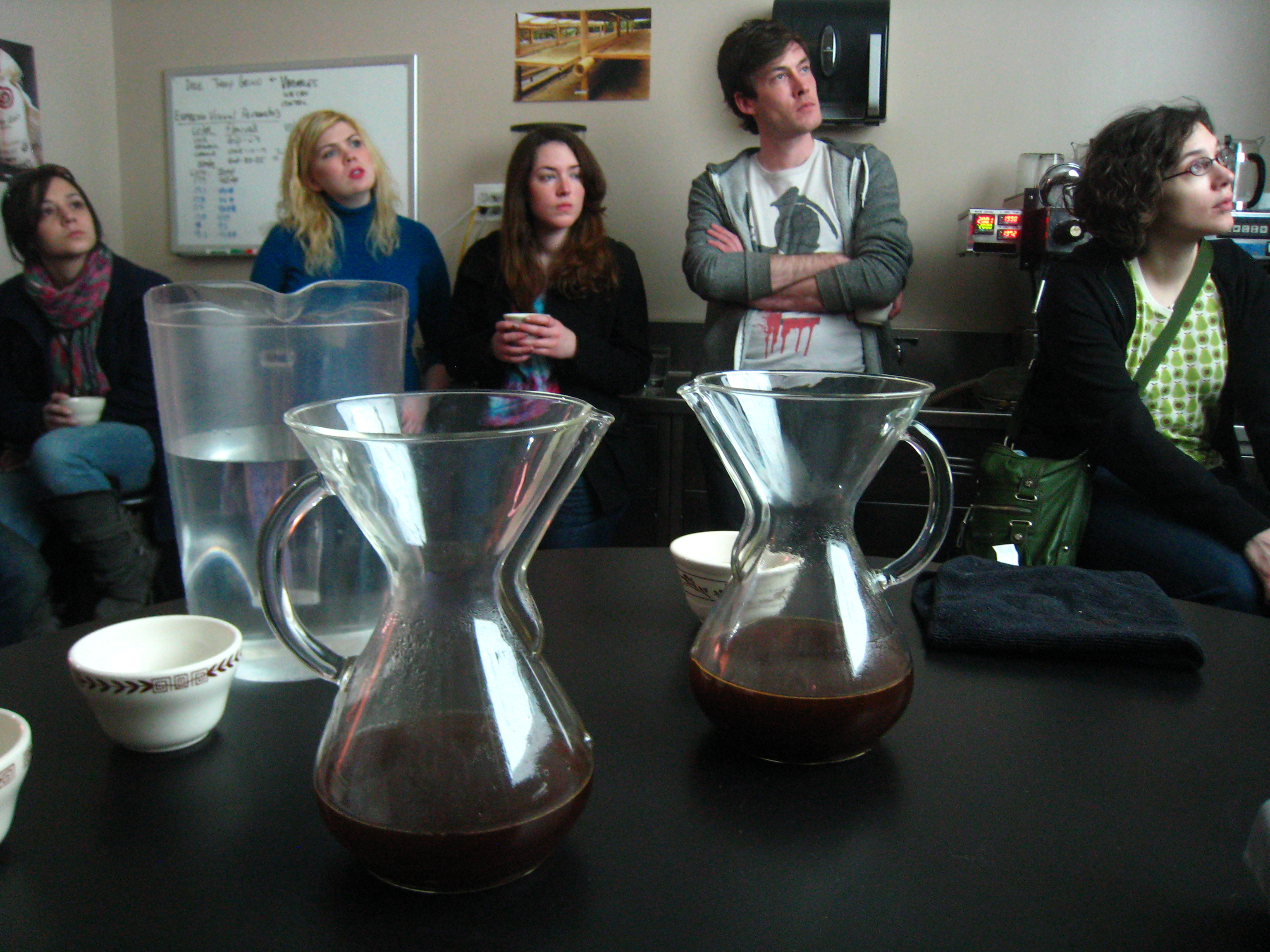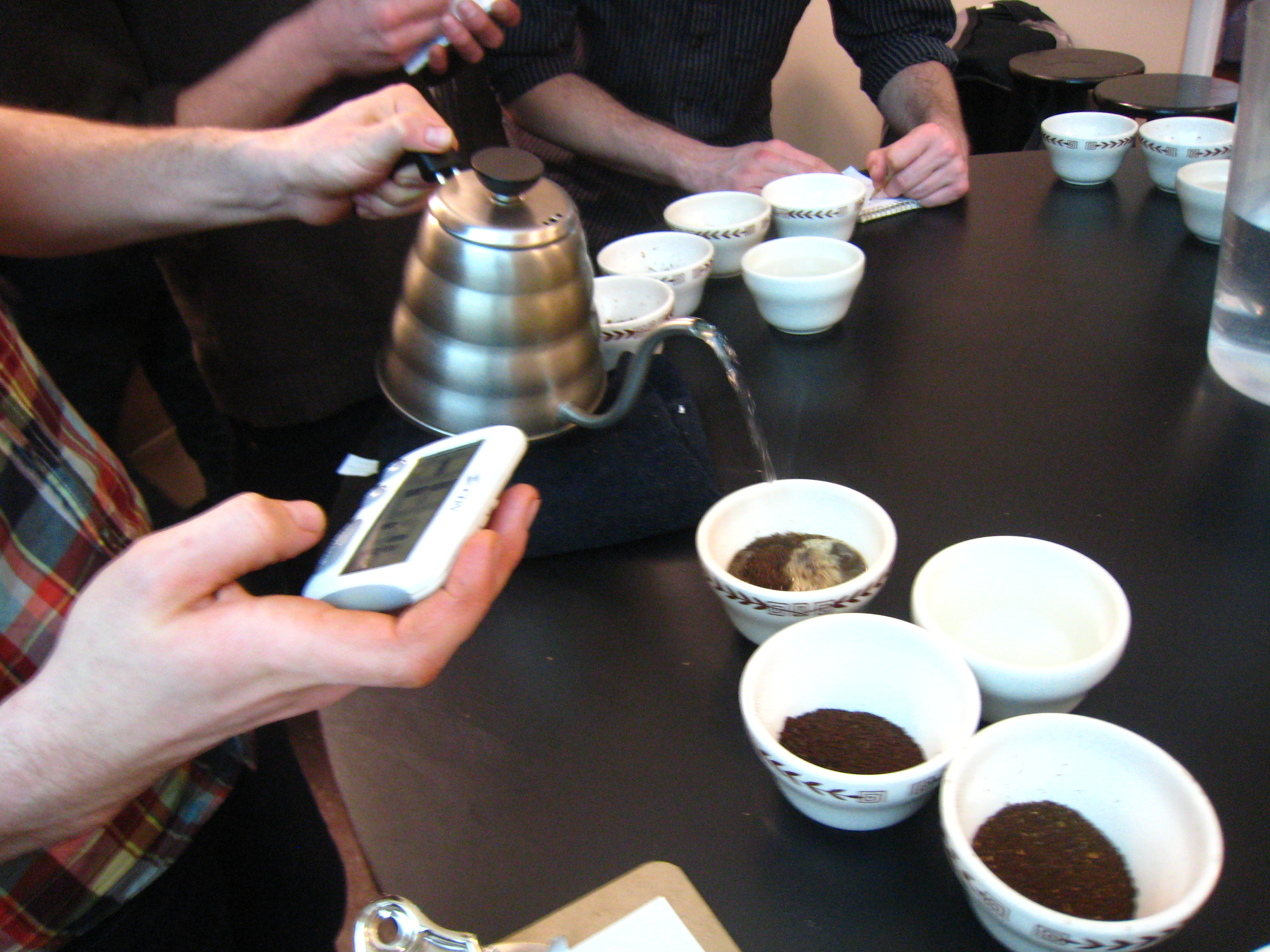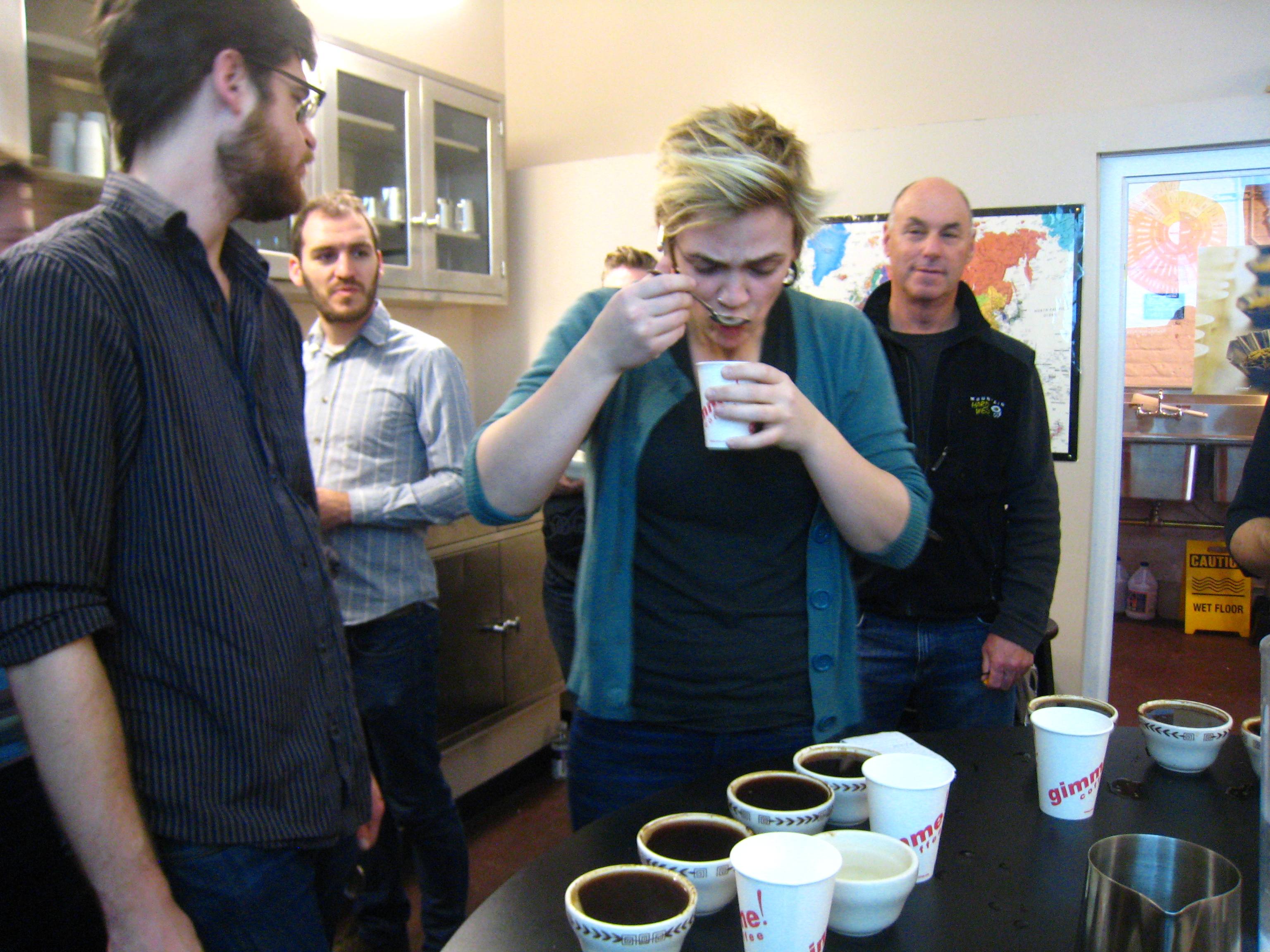Leave your manners at the door when attending a coffee tasting or "cupping." Slurping is a vital part of the process.
“You want to get it in your nose and the back of your throat,” Colleen Anunu told us. She’s the green coffee buyer for the specialty coffee purveyor Gimme! Coffee.
I was one of ten people who showed up at Gimme’s newest store, on Roebling Street in Williamsburg, Brooklyn, for a coffee tasting. They're offered free on Sunday afternoons.
"What if I choke?" someone sheepishly asked.
Anunu responded, cheerfully, "Oh, everyone chokes!"
Before we got our chance to choke, Gimme! regional manager Erin McCarthy talked us through a slideshow about coffee. The coffees we would be tasting were Coffea Arabica, or Arabica [pronounced ah-RAHB-ee-ca] coffee. Arabica and its cousin, Coffea Canephora, or Robusta, are the two species found in most commercial coffees.
Robusta is cheaper to produce than Arabica. It grows at lower altitudes. It’s more disease-tolerant. Its berries stay on the branch when ripe, instead of falling to the ground, the way Arabica berries do, making Robusta easier to monitor for harvest. But Robusta coffee doesn’t taste very good, certainly not as good as Arabica, and nowhere near as rich and complex as top-of-the-line Arabica, which is what we were at the cupping to talk about.
"Most coffee is sold as a commodity -- meaning, it's graded below 80 points on a coffee grading form," explained McCarthy.
The grade refers to the percentage of defects in the beans. Defects occur as under- or over-ripe berries.
"Coffee graded between 80 and 100 points is considered specialty coffee," she said. "We buy upper-specialty coffee or boutique coffee, with no defects."
I'm thinking, "Why doesn't everyone want a defect-free product?" when McCarthy explains that coffee berries ripen along the tree branch at different times. That means if you want Arabica berries when they're reddish-purple and at their peak, you have to pick them by hand, before they fall to the ground. And you have to make several passes over the same tree to collect all the berries at just the right time.

McCarthy says most coffee producers strip the berries from the branches all at one time, regardless of where each berry is on the path to ripeness. You’ll see evidence of this in photos of coffee harvests, like in the one to the left. The beans in the basket are a variety of hues, from green to red to purple.
"Commodity coffee growers get paid by weight, not by quality," McCarthy continued. "So it doesn't matter that there is green, under-ripe berries or over-ripe berries in the basket."
She says coffee producers will try to mask these defects by overroasting the beans.
Anunu chimes in: "Yeah, but you can't turn a Nissan into a BMW, either."
We turn our attention to the BMWs parked in four ceramic cups that Gimme! staff have set out in front of us: four different coffees, all ground for a "pour-over" brewing method.
Our first task is to evaluate their aromas. We are instructed to stick our noses deep into each cup, and inhale deeply. A "flavor wheel" taped to the wall gives me some language to describe what I'm smelling.
I get a hint of cinnamon in the first cup, cherry in the second, lemon peel in the third and leather in the fourth.
The smelling process is repeated after the grounds are moistened with hot water. A staff member sets a timer. Each cup steeps for four minutes.
Then we break the crust of grounds that float at the top of each cup.
"Most of the gasses are released then," said McCarthy, who shows us how to do it. "You swirl the top grounds twice around, using the back of a spoon."
Another big sniff.
"Snuff like an animal," McCarthy advised. I find this helps. I make more notes.
And then it's time for the Big Slurp. And the Big Spit afterwards.
"Unless," said Anunu, "you want to become seriously caffeinated."
I look around for the empty cup the staff had passed out for spitting. I want it close, especially if I get the Slurp wrong and start to choke.
One last bit of advice from Anunu: "Remember, you are never wrong about your preferences. You can become more informed about taste. But preferences are preferences."
She takes a spoonful of Coffee No. 1, and draws it into her mouth with a loud, sharp, "Ssshhhh."
I try to imitate her, but I let out a lispy little "Thhhhhh" instead.
It is incredibly hard to tease out flavors. I read on the flavor wheel that I could be detecting jasmine, toffee, nutmeg or piney notes. Coffee No. 4 tastes piney.
"Pineyness is considered a desirable quality for its complexity," Sununu said.
Yuck. I hate piney. I remember what she said earlier: preferences are preferences.
There's more. There's the body of the coffee to consider. Is it watery, grainy, or oily? Coffee is acidic, but is that acidity tart and fruity (a plus), or sour and acerbic (a minus)? What's the finish like?
I can see how cuppings like this can turn a person into an instant coffee snob. My tolerance for coffee cart coffee just dropped dramatically.
Have you attended a cupping? Many specialty coffee shops are offering them. It's one way to create a demand for their own, high-end brews. Has it changed your coffee habits? It is changing mine. I almost bought a $135 burr grinder over the weekend.


